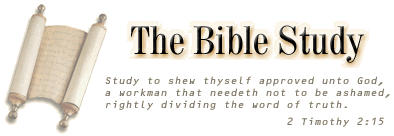The Whiteness of the Horse
And I saw when the Lamb opened one of the seals, and I heard, as it were the noise of thunder, one of the four beasts saying, Come and see. And I saw, and behold a white horse: and he that sat on him had a bow; and a crown was given unto him: and he went forth conquering, and to conquer. (Revelation 6:1-2)
In regard to the period thus initiated by the reign of the Roman Emperor Nerva, the historian Gibbon has remarked that, "were a man called to fix upon an epoch in the history of the world during which the condition of the human race was the most happy and prosperous, he would, without hesitation, name that which elapsed from the death of Domitian to the accession of Commodus," namely, from A.D. 96 to A.D. 180. "The vast extent of the Roman empire was governed by absolute power under the guidance of wisdom and virtue. The armies were restrained by the firm but gentle hand of four successive emperors, whose characters and authority commanded involuntary respect. The forms of the civil administration were carefully preserved by Nerva, Trajan, Adrian, and the two Antonines, who delighted in the image of liberty, and were pleased with considering themselves as the accountable ministers of the laws. Such princes deserved the honor of restoring the republic, had the Romans of their day been capable of enjoying a rational freedom."
Here then are two periods of about equal duration, the one ending, and the other beginning at the death of Domitian; the former styled by the historian, "that unhappy period;" and the latter, "the most happy and prosperous" known to the world. This happiness and prosperity of the Roman people for eighty-four years was owing to the exemption they enjoyed from civil discord under these emperors. The period was a reign of peace over the Roman earth, granted by the opener of the seal, the Lamb; and as white is symbolical of peace and prosperity, the Horseman in the first seal-period, is paraded upon the arena sitting on a white horse.
Some light is thrown upon the whiteness of the horse in this seal by what the Spirit saith of the white horses in Zech. 6:6. He reveals four chariots issuing forth from between two mountains of brass, and horsed with horses of divers colors. He terms these "the four spirits of the heavens which go forth from standing before the Lord of all the earth." One of the spirit-chariots was harnessed with black horses, and another of them with white. Their mission was "into the north country" - north from Jerusalem. That country was to be plagued, therefore the black horses were sent thither first. While they were doing their work, the Lord's Spirit was in a state of unrest, actively inflicting judgment upon the workers of iniquity in the north country. But when they had been sufficiently plagued, the white horses were sent into the country after them - "the white go forth after the black." As the white drove through the land the black would retire; and the vision of the north country would be a spirit chariot with white horses. What then would be the condition of that country so symbolized? The answer is, peace, prosperity, and plenty would be its condition; in other words, the Lord's Spirit having conquered, would be in a state of rest; his wrath against the people would have passed away, and public tranquility be restored; as saith the Spirit, "Behold these that go toward the north country have quieted my spirit in the north country."
Now without identifying the vision in Zechariah with the seven seals, the point of the first seal derived from it is this. The "unhappy period" which preceded the fall of Domitian was a period of unrest to the Spirit of the Lord of the whole earth - "the Lamb." In it "the spirits of the heavens" went forth through all the Roman habitable earth, inflicting judicial calamities upon the families which had for ages presided over the destinies of the republic, and upon the pagan people; all of whom were colleagued against the Deity in their persecution of his apostles unto death, and of his saints and nation. Had these earlier eighty years of trouble been symbolized by horses, they would have been black and red; and while in motion, going forth, would have indicated a state of unrest. But the judicial condition of the Roman empire during those years is not symbolized.
Instead, we are introduced to the state of the Roman empire with the first seal's symbolization. We "see," as John "saw," that whatever might have been the color of things hitherto, a white horse was to be the sign when the first seal-period should open; and that then the spirit of the Lord would be quieted in the Roman Habitable until the time arrived to open the second seal-period, however long that might be; and that then in the first seal-period, there would be peace, prosperity, and plenty for the people generally.
Source: Eureka - volume 2
